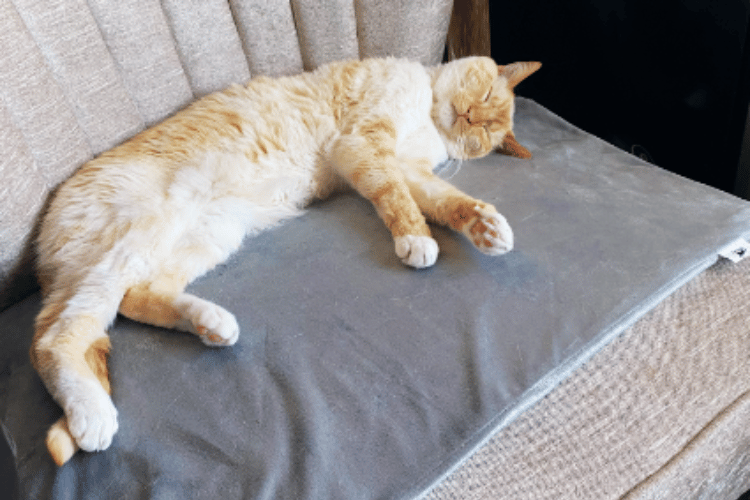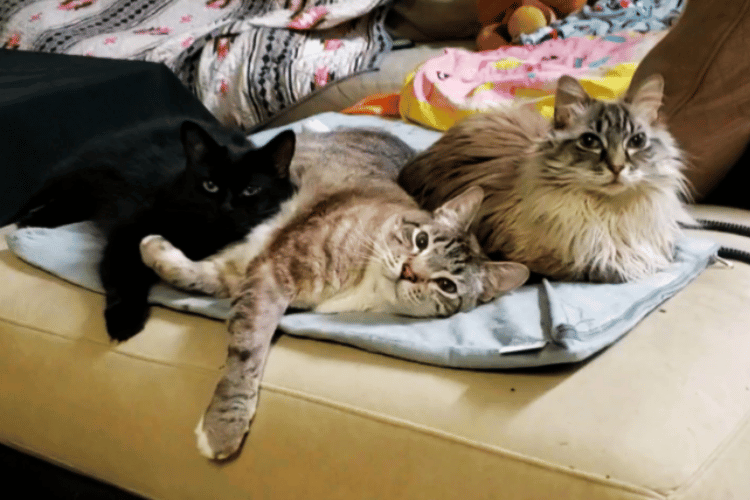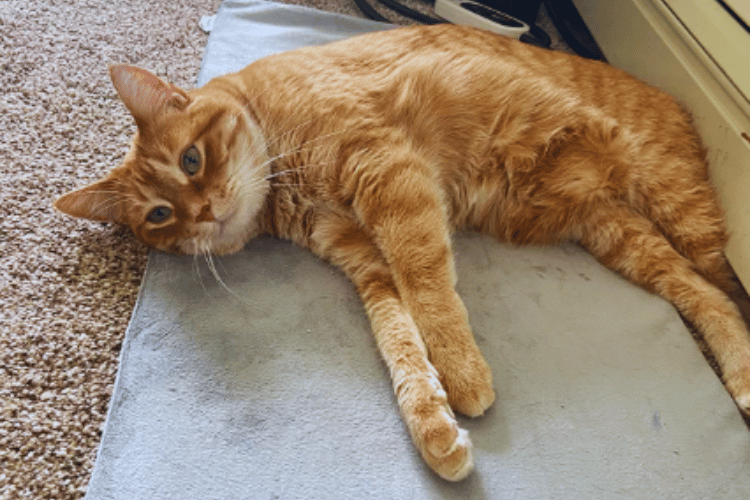Cats are notorious for their love of snuggling up and keeping warm, so if you're a cat lover, chances are you've wondered just what the ideal temperature is for providing your furry friend with a heating pad to cuddle up on.
While most pet owners understand that cats enjoy warmth, the details can be confusing - should it be set on low or high? Is there an optimal temperature range that makes them feel comfortable?
In this article, we'll break down all of these questions regarding heat pads and cats, giving pet lovers everywhere the comfort of knowing they’re making their kitties purr in ultimate contentment. Read on to find out more about figuring out the best temperature for a heating pad!

Keeping Your Cat Warm: What is the Best Temperature for a Heating Pad?
Cats are creatures of comfort, and they love nothing more than staying warm and cozy. One way to ensure that your feline friend stays comfortable is by using a heating pad. A heating pad can be especially helpful during the winter months when temperatures drop and your cat is looking for a warm place to snuggle.
However, it's essential to know the right temperature to set the heating pad to avoid hurting your pet. Read on to learn more about the best temperature for a heating pad for cats.
Consider Your Cat's Needs
Before using a heating pad on your cat, consider their specific needs. Older cats or those with arthritis can benefit from a slightly warmer heating pad, as it can help soothe their joints.
If your cat is generally healthy and only needs a little extra warmth, then a lower setting will be sufficient. Speak to your vet if you're not sure what temperature is best for your furry friend.
Opt for Low Heat Setting
When it comes to heating pads, even the lowest setting can be enough to keep your cat's bedding nice and warm. A low heat setting will prevent any burns or skin damage to your cat and ensure a comfortable warmth level.
Keeping the temperature between 96 to 100 degrees Fahrenheit is sufficient enough for cats. Always monitor your cat to ensure they do not develop a fever, which is a common side effect of prolonged exposure to a heating pad.
Use a Timer
Heating pads can be left turned on until their internal timers shut down automatically. However, this may not be the best solution for your cat's health or safety.
Instead, invest in a heating pad with a timer that will shut off after a specified period. This will prevent your cat from getting overheated and reduces the risk of burns or damage to the heating pad.
Supervision is Essential
While heating pads can provide comfort and warmth to your cat, they do come with some risks. Never leave your cat alone with a heat source as it can result in burns or other injuries. Be sure to monitor your cat while the heating pad is on and ensure that they're not getting too hot or uncomfortable.

Alternative Heating Methods
Apart from heating pads, there are other ways to help your cat stay warm. Fleece blankets and cat beds designed for warmth are also great alternatives.
Keep your cat's bedding away from sources of cold air, such as windows and doors. Your cat will naturally gravitate towards the warmer parts of the room, so make sure that's where their bedding is.
In conclusion, heating pads can be a great way to keep your cat warm and comfortable. A low heat setting, a timer, and proper supervision are essential to prevent harm to your pet. And while heating pads are excellent, they should not be the only source of warmth.
Other alternatives like blankets, cat beds, and insulated bedding can go a long way in keeping your cat comfortable through the colder months. By following these tips, you can help ensure that your cat stays warm and cozy all winter long.
FAQs - Best Temperature for a Heating Pad for a Cat
Are you looking for the best way to keep your furry companion nice and cozy this winter? If so, then a heating pad might be just the trick. Whether your kitty is feeling under the weather or simply enjoying sleeping in colder climates, it's important to understand what is the optimal temperature for them when using a heating pad.
In this FAQ section we'll answer some of your frequently asked questions about how cats can benefit from having heated pads and what temperatures are safe for use. You'll have all the knowledge you need to make sure your cat stays warm and comfortable!
What is the ideal temperature for a heating pad for a cat?
The ideal temperature for a heating pad for a cat is around 100°F (37.8°C). This temperature provides gentle warmth without posing a risk of overheating or burns. It is essential to ensure that the heating pad has adjustable temperature settings to maintain a safe and comfortable temperature for your cat.
Can a heating pad be too hot for a cat, and how can I tell if it's too hot?
Yes, a heating pad can be too hot for a cat. Signs that it may be too hot include excessive panting, restlessness, or discomfort expressed by your cat. To avoid this, always use a heating pad designed specifically for pets, as these are built with temperature controls and safety features to prevent overheating. Additionally, place a towel or blanket between the heating pad and your cat to provide a barrier and prevent direct contact with excessive heat.
Can I use a human heating pad for my cat, or do I need a special one?
It is recommended to use a heating pad specifically designed for pets. Human heating pads may reach higher temperatures and lack the necessary safety features for pets. Pet-specific heating pads are designed to provide consistent, gentle warmth without posing a risk to your cat's well-being. Investing in a pet-specific heating pad ensures the safety and comfort of your feline companion.
How long should I leave the heating pad on for my cat, and is it safe to leave it on overnight?
It is generally advised to limit the use of a heating pad for cats to 15-30 minutes at a time. Continuous use for more extended periods, including overnight, can potentially lead to overheating or burns. To provide warmth throughout the night, consider using a heated cat bed specifically designed for extended use. Always consult with your veterinarian for specific guidance regarding the duration of heating pad use based on your cat's individual needs.
Are there any risks or potential health concerns associated with using heating pads for cats, and how can I avoid them?
While heating pads can be beneficial for cats, there are some potential risks. Prolonged exposure to excessive heat can cause burns or dehydration. To avoid these risks, always monitor your cat when using a heating pad and follow the recommended usage guidelines provided by the manufacturer. Use a heating pad with adjustable temperature settings, provide proper insulation between the cat and the pad, and avoid leaving the pad unattended. Regularly check the heating pad for any signs of wear or malfunction. If you notice any adverse reactions or concerns, consult with your veterinarian for guidance.
Ultimately, the decision of what is the best temperature setting for a heating pad for a cat lies in your hands. It's important to take into consideration your cat's preferences and needs to ensure they receive the warmth they need.

As an owner, it's your responsibility to find that perfect balance for them. All cats are special in their own way and may have different preferences and tolerances when it comes to heat so don't be afraid to adjust the temperature if necessary.
Don't forget that cats appreciate consistency almost as much as warmth and can become comfortable with plenty of snuggles afterwards. So go out and get your cat a cozy heating pad today! With this new addition, you'll rest easy knowing they're getting all the love and warmth possible.
Thank you for visiting LegitLists we hope this helps you make a legitimate choice!






